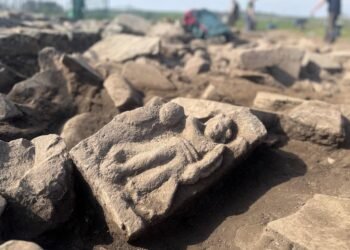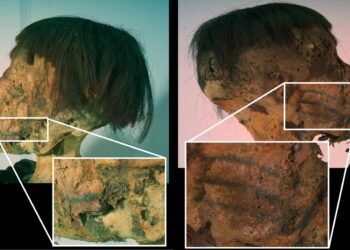A joint effort to restore the natural habitat of Belgium has unveiled a trove of historical artifacts dating back to World War II.

The restoration project, spearheaded by the Municipality of Knokke-Heist and part of the broader European initiative known as LIFE DUNIAS, focused on rejuvenating the coastal dunes within the Director-General Willemspark, situated in Heist, Belgium. The initial goal of eliminating invasive plant species quickly evolved into the discovery of long-buried remnants of wartime history, concealed within the depths of time.
Located in the Knokke-Heist municipality, near the Belgian-Dutch border, Heist Willemspark holds a significant historical legacy. During World War I, the park served as a strategic location for German heavy artillery batteries named “Freya” and “Augusta,” along with a network of forward observation bunkers for monitoring shipping in the English Channel. These structures were largely demolished after the war, but the area regained military importance during World War II as part of the Atlantic Wall coastal defense system.
The recent effort has revealed the extensive fortifications established by the German army during World War II. The bunkers, identified as Gruppenunterstand Type VF2a, were designed to accommodate small units of soldiers operating forward radar positions. Measuring 6 by 7 meters externally and featuring walls and ceilings of reinforced concrete one meter thick, these bunkers remained remarkably intact despite decades of burial beneath the sand.

Excavations also revealed traces of brick trenches, fragments of concrete tracks, and a water well, indicating the presence of a complex infrastructure hidden beneath the park’s surface. The discovery underscores the efforts made by the German army to fortify the coastal region against potential Allied invasions, with Heist Willemspark designated as Stützpunkt Heyst during the war.
“These ruins aptly illustrate the previous frantic attempts to completely erase the park’s war history,” officials from the Municipality of Knokke-Heist said in the news release. “The lighter structures were demolished and reduced to rubble, while heavier bunkers were covered with a layer of soil and hidden as if they had never existed.”
Archaeologists believe that the recent discoveries are just the beginning, with more World War II structures likely buried beneath the park’s surface. Sam De Decker, an archaeologist involved in the project said: “Once we have dug along the entire coast, it will probably take four more winters. We’ve [already] discovered an incredible amount.”
























